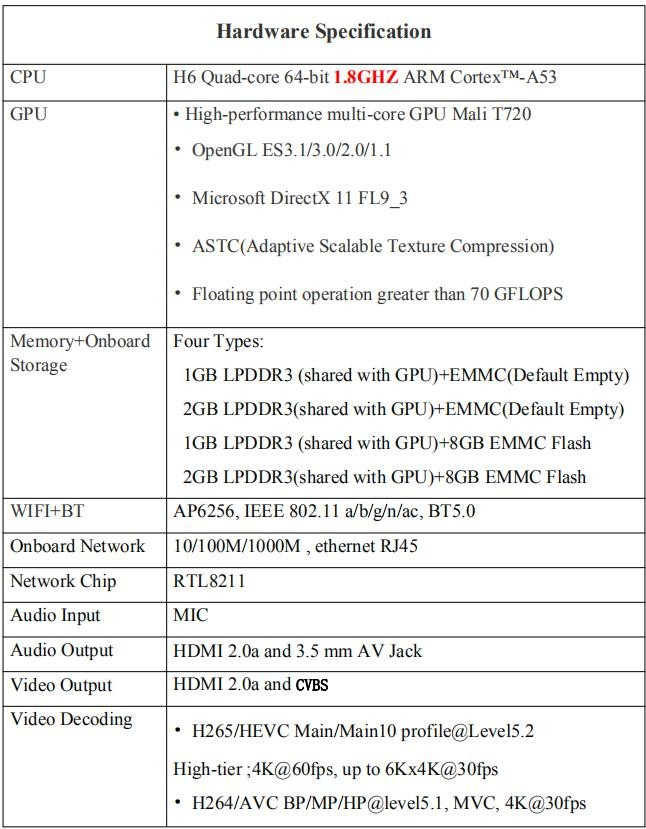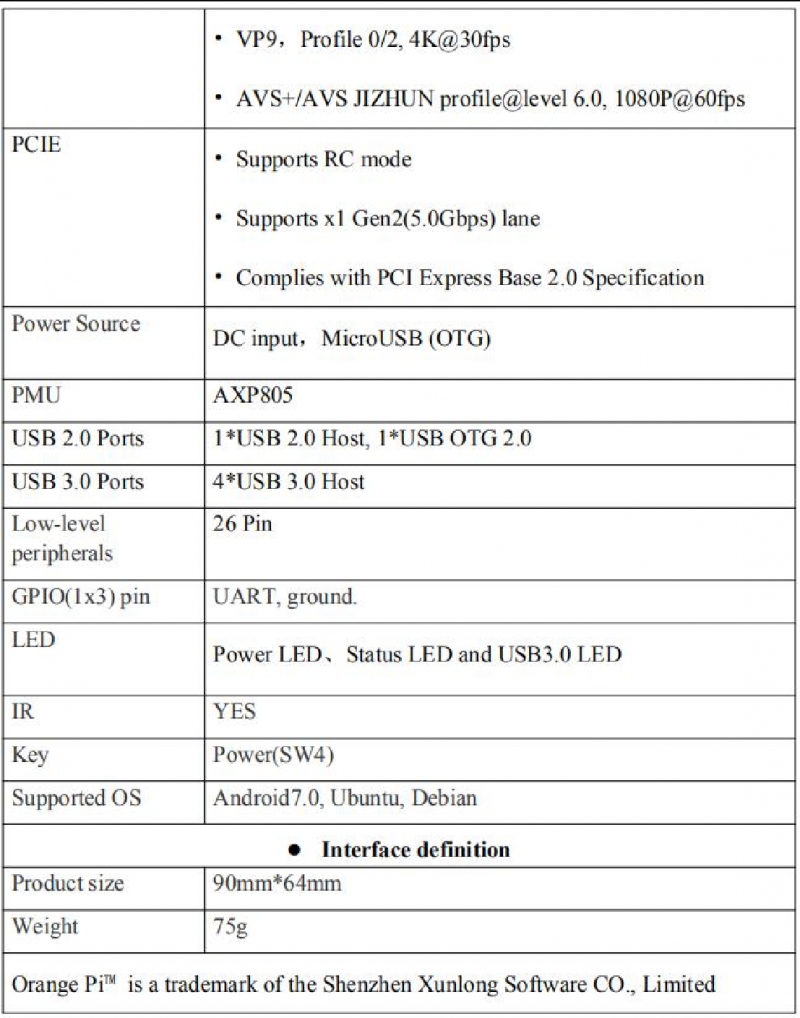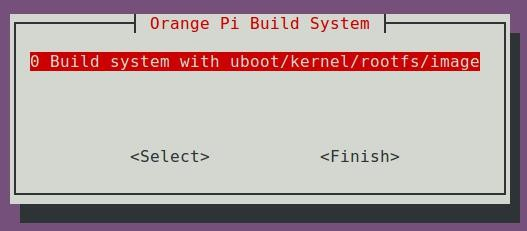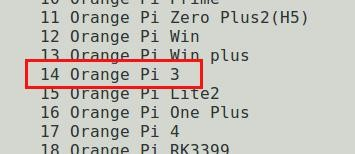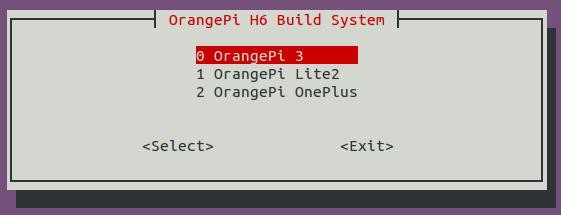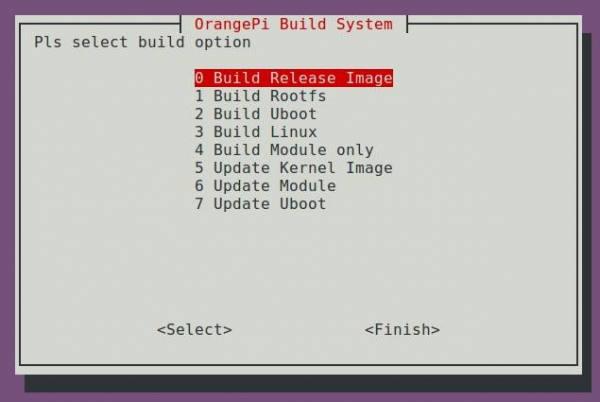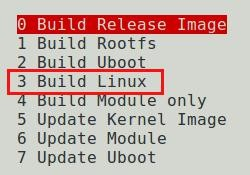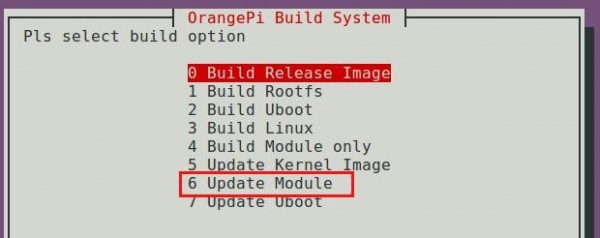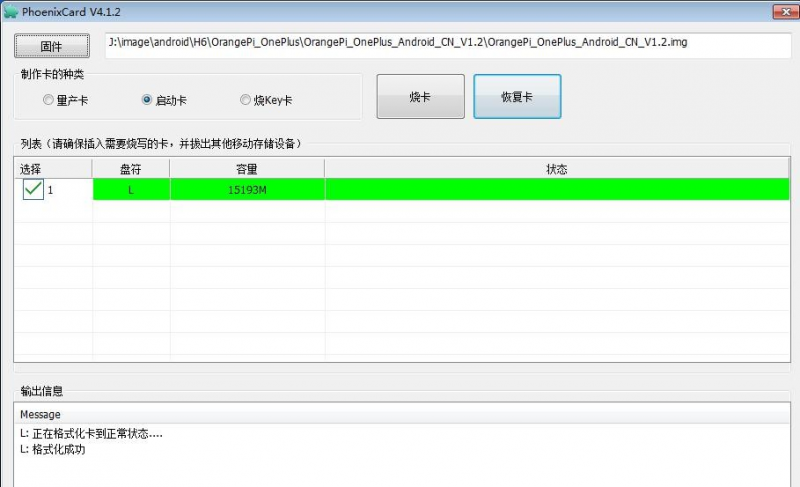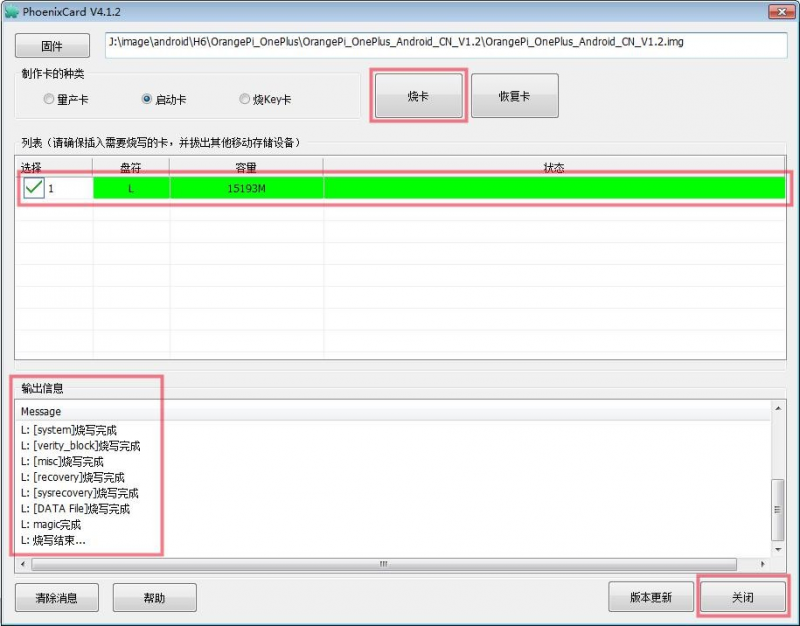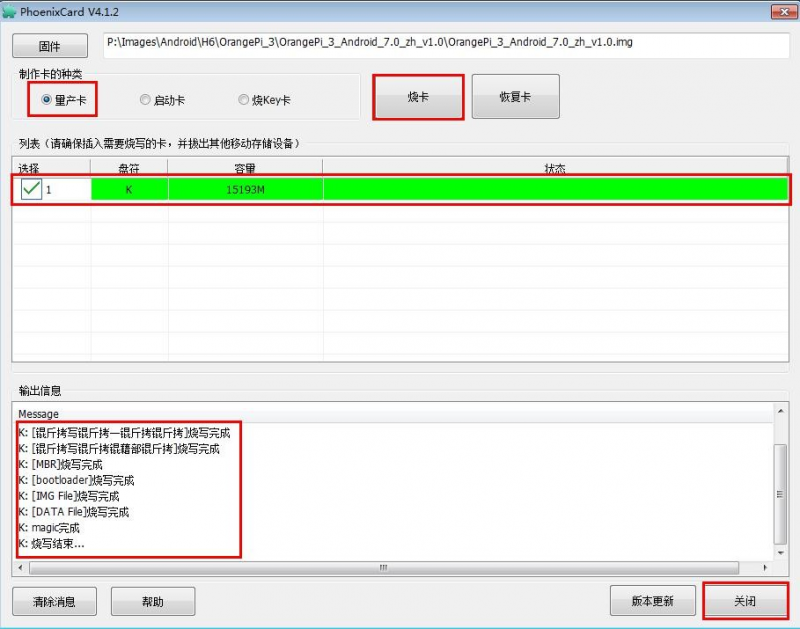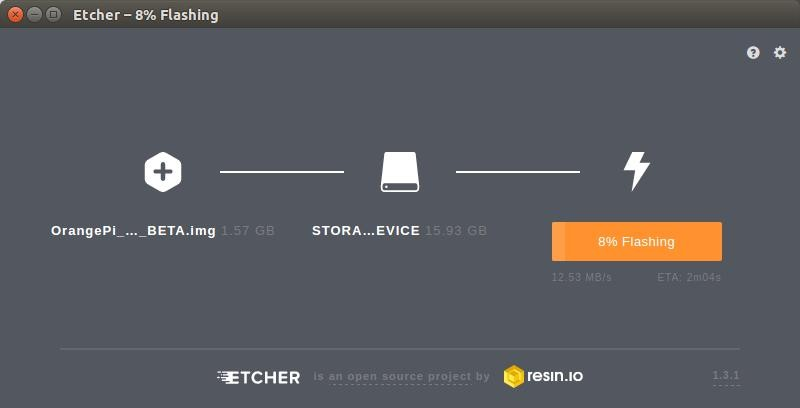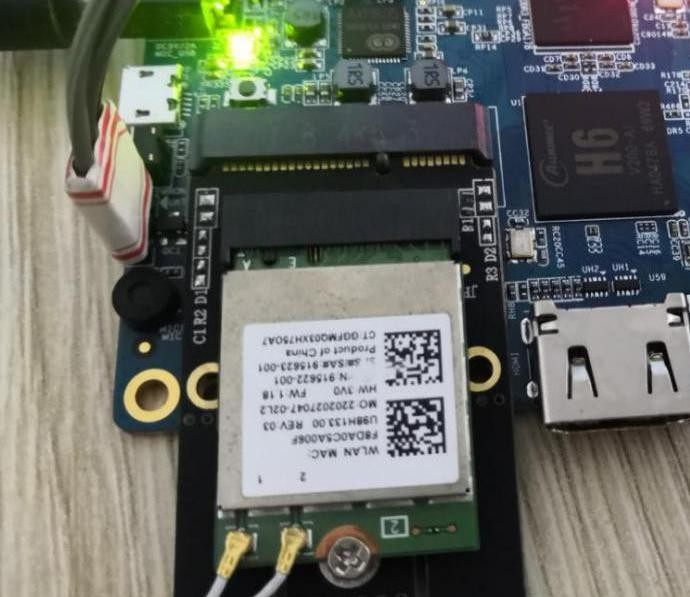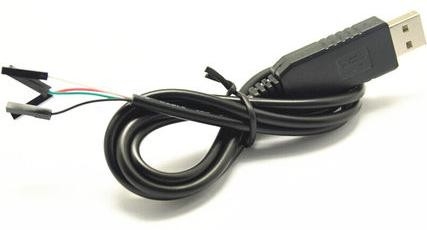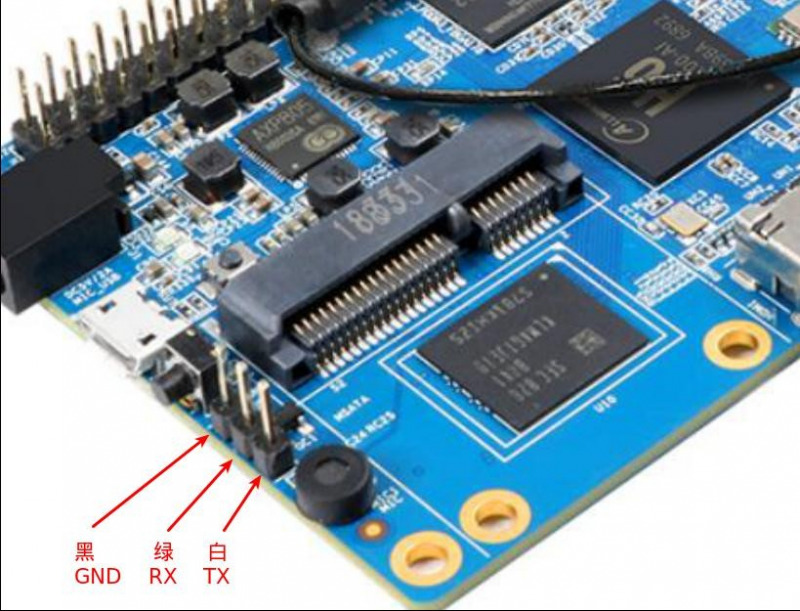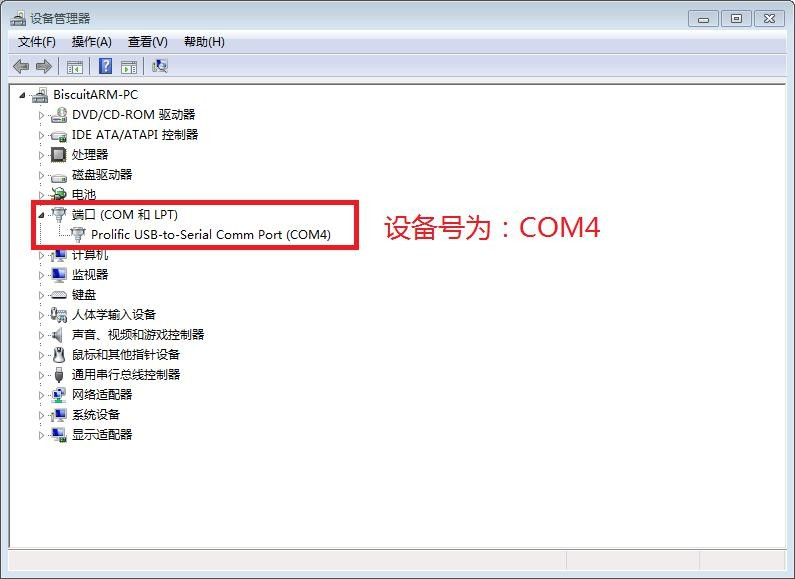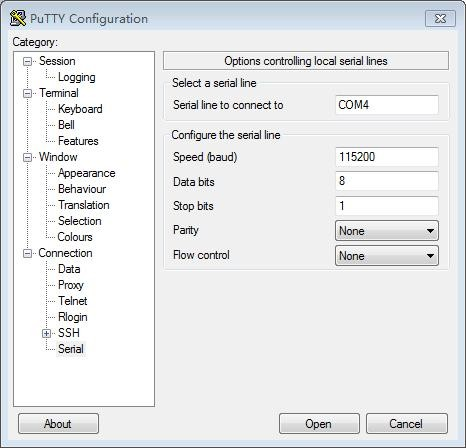Orange Pi 3
Contents
- 1 Basic Features of Orange Pi 3
- 2 Development board instructions
- 3 Android compilation environment
- 4 Setting up a Linux compilation environment
- 5 Android firmware burning
- 6 Linux firmware burning
- 7 Instructions for use of Linux system
- 8 Introduction to serial debugging tools
- 9 History
- 10 Download the Orange Pi 3 User Manual
Basic Features of Orange Pi 3
What is Orange Pi 3
Orange Pi is an open source single board card computer, a new generation of arm64 development board, which can run Android 7.0, Ubuntu and Debian operating systems. The Orange Pi single board computer uses Allwinner H6 system-on-chip and has 1GB or 2GB LPDDR3 memory.
Use of Orange Pi 3
We can use it to build:
- A computer
- A web server
- Game console
- HD video player
- Speaker
- Android
- ......
Who is the Orange Pi 3 designed for?
Orange Pi 3 is not just a consumer product, it is also designed for anyone who wants to use technology for creative creation. It is a very simple, fun and practical tool that you can use to build the world around you.
Orange Pi 3 hardware parameters
GPIO specifications
The following figure is the GPIO pin function diagram of Orange Pi 3:
| Orange Pi 3 pin correspondence table | ||
| CON12-P01 | VCC-3.3V | VCC-IO |
| CON12-P02 | VCC-5V | DCIN |
| CON12-P03 | TWI0-SDA | PD26 |
| CON12-P04 | VCC-5V | DCIN |
| CON12-P05 | TWI0-SCK | PD25 |
| CON12-P06 | GND | GND |
| CON12-P07 | PWM0 | PD22 |
| CON12-P08 | S-UART-TX | PL02 |
| CON12-P09 | GND | GND |
| CON12-P10 | S-UART-RX | PL03 |
| CON12-P11 | UART3-RX | PD24 |
| CON12-P12 | PD18 | PD18 |
| CON12-P13 | UART3-TX | PD23 |
| CON12-P14 | GND | GND |
| CON12-P15 | PL10 | PL10 |
| CON12-P16 | PD15 | PD15 |
| CON12-P17 | VCC-3.3V | VCC-IO |
| CON12-P18 | PD16 | PD16 |
| CON12-P19 | SPI1_MOSI | PH05 |
| CON12-P20 | GND | GND |
| CON12-P21 | SPI1_MISO | PH06 |
| CON12-P22 | PD21 | PD21 |
| CON12-P23 | SPI1_CLK | PH04 |
| CON12-P24 | SPI1_CS | PH03 |
| CON12-P25 | GND | GND |
| CON12-P26 | PL08 | PL08 |
Development board instructions
Prepare hardware and software tools
Hardware requirements:
- Orange Pi 3 development board
- TF card, minimum 8GB capacity, class 10, it is recommended to use brand TF card, such as SanDisk 16G TF card
- For a compiling host, the configuration should preferably meet the following conditions:
64bit CPU;
8 GB and above;
100GB of free disk space;
The operating system is preferably
Ubuntu14.04 (for compiling Android source code)
Ubuntu18.04 (for compiling Linux source code)
Software Requirements:
- Orange Pi 3 SDK
- Orange Pi 3 firmware
- Android and Linux programming tools
The above software can be obtained through Github, Google Web Disk and Baidu Cloud Disk.
http://www.orangepi.cn/html/serviceAndSupport/index.html
http://www.orangepi.online/html/serviceAndSupport/index.html
Power supply mode of development board
There are two ways to power the development board:
- DC (5V 2A) power supply: Power on after inserting the DC adapter
- Micro USB (5V 2A) OTG power supply:Plug in the Micro USB adapter to power on.
Android compilation environment
The following operations are performed on a PC with Ubuntu 14.04 installed. Other versions of Ubuntu systems or Linux distributions may have some differences.
Get SDK source code zip
After downloading the Android source package, first you need to combine multiple compressed files into one and then decompress them.
$ mkdir OrangePi_3
$ cat H6-2018-1-2.tar.gza* > OrangePi_3.tar
$ tar xf OrangePi_3.tar -C OrangePi_3
Build a compilation environment
- Install JDK
Android 7.0 development can only use the version of openjdk8, higher or lower than this version and Oracle's JDK will cause the compilation to fail. Openjdk-8 installation command is as follows:
$ sudo add-apt-repository ppa:openjdk-r/ppa
$ sudo apt-get update
$ sudo apt-get install openjdk-8-jdk
- Configure JAVA environment variables
For example, the installation path is / usr / lib / jvm / java-8-openjdk-amd64. You can run the following command in the terminal to configure the environment variables:
$ export JAVA_HOME=/usr/lib/jvm/java-8-openjdk-amd64
$ export PATH=$JAVA_HOME/bin:$PATH
$ export CLASSPATH=.:$JAVA_HOME/lib:$JAVA_HOME/lib/tools.jar
- Install platform support software
For Ubuntu 14.04:
$ sudo apt-get update
$ sudo apt-get install git gnupg flex bison gperf build-essential \ zip curl zlib1g-dev gcc-multilib g++-multilib libc6-dev-i386 \ lib32ncurses5-dev x11proto-core-dev libx11-dev lib32z1-dev ccache \ libgl1-mesa-dev libxml2-utils xsltproc unzip
$ sudo apt-get install u-boot-tools
Compile SDK source code
After the SDK is decompressed, there will be two subdirectories andorid and lichee under the decompressed directory. The main contents of the lichee directory are as follows:
lichee/brandy/u-boot-2014.07 #uboot Code directory
lichee/bootloader/uboot_2014_sunxi_spl #boot0 Code directory
lichee/linux-3.10 #Kernel code
lichee/tools #Solution hardware configuration, packaging tools, etc.
- Kernel compilation process
Enter the following command in the lichee directory:
$ cd OrangePi_3/lichee
$ ./build.sh config
Welcome to mkscript setup progress
All available chips:
- sun50iw1p1
- sun50iw2p1
- sun50iw6p1
- sun8iw11p1
- sun8iw12p1
- sun8iw6p1
- sun8iw7p1
- sun8iw8p1
- sun9iw1p1
Choice: 2
All available platforms:
- android
- dragonboard
- linux
- eyeseelinux
Choice: 0
All available business:
- 5.1
- 4.4
- 7.x
Choice: 2
The output after compilation is as follows:
regenerate rootfs cpio
15757 blocks
17099 blocks
build_ramfs
Copy boot.img to output directory ...
Copy modules to target ...
sun50iw6p1 compile Kernel successful
INFO: build kernel OK.
INFO: build rootfs ...
INFO: skip make rootfs for android
INFO: build rootfs OK.
build sun50iw6p1 android 7.x lichee OK
The kernel code is in the lichee / linux-3.10 directory. Executing the above commands will automatically copy the configuration file from lichee / linux-3.10 / arch / arm64 / configs / sun50iw6p1smp_android_7.x_defconfig to lichee / linux-3.10 / .config as the default configuration before compiling , You can run ./build.sh directly in the lichee directory for the next compilation, and will continue to use the previous .config configuration.
- uboot / boot0 compilation process (optional)
Normally, you do not need to recompile uboot, but if you have custom modifications to uboot, you can compile. The compilation method is as follows:
cd lichee/brandy/u-boot-2014.07
make distclean && make sun50iw6p1_config && make -j5 # compile uboot
cd lichee/brandy/u-boot-2014.07
make distclean && make sun50iw6p1_config && make spl # compile boot0
If uboot / boot0 is not compiled, the default is to use the pre-compiled results of lichee
/ tools / pack / chips / sun50iw6p1 / bin. After recompiling with the above command, the above files will be replaced automatically.
- Android code compilation process
$ cd android
$ source ./build/envsetup.sh
$ lunch petrel_fvd_p1-eng
$ extract-bsp
$ make -j8 && pack
The pack command is used to generate the firmware. If the compilation and packaging process passes successfully, the following message will be prompted:
Dragon execute image.cfg SUCCESS !
image is at----------
OrangePi_3/lichee/tools/pack/sun50iw6p1_android_petrel-p1_uart0.img
pack finish
According to the prompt, you can see the generated Android firmware sun50iw6p1_android_petrel-p1_uart0.img in the OrangePi_3 / lichee / tools / pack / directory. Below, please refer to the "Android Firmware Burning" section to complete the Android firmware burning.
Setting up a Linux compilation environment
Get the Linux SDK source code from Github
- Orange Pi Linux source downloader
Orange Pi 3's Linux source code has been uploaded to GitHub. The currently supported kernel version is Linux 4.9 and the mainline kernel (some drivers are still under development). We can use the Orange Pi Linux source-specific downloader to download and obtain the downloader source code. Here's the way:
$ sudo apt-get install git
$ git clone https://github.com/orangepi-xunlong/OrangePi_Build.git
$ cd OrangePi_Build
$ ls
Build_OrangePi.sh lib README.md
- Run the downloader
$ ./Build_OrangePi.sh
Enter the root password and press enter
Select 0 Build system with uboot / kernel / rootfs / image to enter the interface of development board model selection.
Select orange pi 3, enter the kernel version selection interface after entering
At present, the orangepi 3 development board supports the kernel code of Linux 4.9 and mainline. Select one of them and press Enter to start downloading the corresponding SDK source code.
The downloaded source code will be stored in the same directory of OrangePi_Build
$ ls ../OrangePi_Build -l OrangePi_Build
OrangePiH6_Linux4.9 (Where the kernel version is Linux4.9)
OrangePiH6_mainline (The current kernel version is Linux5.3.5)
Get the source code of Linux SDK from Baidu Cloud Disk
If GitHub fails to download the code, you can download the source code compression package of Linux SDK directly from Baidu Cloud Disk.
Download link is:
Set up a compilation environment
Orange Pi H6 Linux SDK has only been tested on PCs with Ubuntu 18.04. Please prepare the host environment of ubuntu 18.04 before use.
The Linux source directory structure for Orange Pi H6 is shown below:
$ cd OrangePiH6_Linux4.9
$ tree -L 1
.
├── build.sh -> scripts/build.s Compile startup script
├── external Store additional configuration files
├── kernel Linux kernel source
├── output Store output files, only generated after compiling source code
├── scripts Script files used during compilation
├── toolchain Cross-compilation toolchain used by the kernel and u-boot
└── uboot Store boot0 and u-boot source code6 directories, 1 file
Compile Linux and U-boot source code
- execute the compilation start up script
$ cd OrangePiH6_Linux4.9
$ sudo ./build.sh
Select OrangePi 3 and press Enter
The functions of each option are as follows:
- 0 Build Release Image —— Compile ubuntu or debian distribution images
- 1 Build Rootfs —— Compile rootfs for ubuntu or debian
- 2 Build Uboot —— Compile boot0 and u-boot source code
- 3 Build Linux —— Compile Linux kernel source code
- 4 Build Module only —— Compile Linux kernel modules
- 5 Update kernel Image —— Update kernel in SD card Linux system
- 6 Update Module —— Update the kernel module in SD card Linux system
- 7 Update Uboot —— Update boot0 and u-boot and dtb configuration of SD card Linux system
The final file generated by the compilation will be saved in the output directory
| $ cd output | |
| $ tree | -L 2 |
| . | |
| ├── | images //Generated image file |
| │ | images //Generated image file |
| │ | └── OrangePi_3_ubuntu_xenial_server_linux4.9.118_v2.0.2.img |
| ├── | kernel //Compile the generated kernel |
| │ | └── uImage_3 |
| ├── | rootfs //Compile the generated rootfs |
| ├── | uboot //Compile the generated uboot image |
| │ | ├── boot0_sdcard_sun50iw6p1.bin |
| │ | ├── H6.dtb |
| │ | └── u-boot-sun50iw6p1.bin |
| └── | xenial_arm64_server_rootfs.tar.gz |
Linux SDK usage example
The following will fully demonstrate the use of the Linux SDK by adding a rtl8812AU USB WIFI kernel module to the kernel source.
- Get the source code of rtl8812AU from github
$ cd OrangePiH6_Linux4.9/kernel/drivers/net/wireless
$ git clone https://github.com/diederikdehaas/rtl8812AU.git
Cloning into 'rtl8812AU'...
remote: Counting objects: 2347, done.
Receiving objects: 100% (2347/2347), 7.87 MiB | 22.00 KiB/s, done.
Resolving deltas: 100% (1292/1292), done.
Checking connectivity... done.
- Add the configuration of rtl8812AU
$ cd OrangePiH6_Linux4.9/kernel/drivers/net/wireless
$ git diff .
diff --git a/drivers/net/wireless/Kconfig b/drivers/net/wireless/Kconfig
index 373666b..b7ebd5c 100755
--- a/drivers/net/wireless/Kconfig
+++ b/drivers/net/wireless/Kconfig
@@ -294,4 +294,5 @@ source "drivers/net/wireless/rtl8192eu/Kconfig"
+source "drivers/net/wireless/rtl8812AU/Kconfig" endif # WLAN
diff --git a/drivers/net/wireless/Makefile
b/drivers/net/wireless/Makefile
index fd8a466..3aef800 100755
--- a/drivers/net/wireless/Makefile
+++ b/drivers/net/wireless/Makefile
@@ -66,3 +66,4 @@ obj-$(CONFIG_XR_WLAN) += xradio/
+obj-$(CONFIG_RTL8812AU) += rtl8812AU/
- Select Realtek 8812A USB WiFi in the kernel configuration and compile it into a kernel module
- Recompile the kernel according to the method of `` Compiling Linux and U-boot Source
Partially compiled log looks like this:
Start Compile.....
Start Compile Module
CC [M] drivers/net/wireless/rtl8812AU/core/rtw_cmd.o
CC [M] drivers/net/wireless/rtl8812AU/core/rtw_security.o
CC [M] drivers/net/wireless/rtl8812AU/core/rtw_debug.o
CC [M] drivers/net/wireless/rtl8812AU/core/rtw_io.o
CC [M] drivers/net/wireless/rtl8812AU/core/rtw_ioctl_query.o
CC [M] drivers/net/wireless/rtl8812AU/core/rtw_ioctl_set.o
After compiling, you can find the compiled kernel module in output / lib / modules / 4.9.118 + / kernel / drivers / net / wireless / rtl8812AU
$ cd output/lib/modules/4.9.118+/kernel/drivers/net/wireless/rtl8812AU
$ ls
8812au.ko
- Update kernel module
First, insert the SD card that has been burned with Linux firmware into a PC used
to compile Linux source code (physical or virtual machine with Ubuntu 18.04 installed). After the system recognizes and successfully mounts the inserted SD card, we can / media / $ LOGNAME see the name of the corresponding partition.
$ cd /media/$LOGNAME
$ ls
BOOT Store the kernel
rootfs Root file system
Then choose 6 Update Module to update the kernel module according to the instructions in the section `` Compiling Linux and U-boot Source
Next, you can start the system through the SD card and use the new 8812au.ko kernel module to drive the USB WIFI network card.
Android firmware burning
Android firmware cannot be written to the TF card via the dd command in Linux or the Win32 Diskimager tool in Windows. Need to use the tool PhoenixCard to write, PhoenixCard current latest version is PhoenixCard V4.1.2, can be downloaded from the official tool on the official website download page.
Android firmware burning steps (TF card start up)
- Format TF card
Check whether the inserted TF card is consistent with the selected drive letter, click the "Restore Card" button to start formatting the TF
- Then select the firmware, select the boot card
Please note the red mark in the picture below:
- Click “Burn Card” to start writing to the TF card, and wait for the completion of burning.
After the Android firmware is successfully programmed, click the "Close" button, and then you can insert the TF card into the development board to start the system
Android firmware programming steps (programming to EMMC via TF card)
If you purchased the Orange Pi 3 development board with EMMC Flash chip, you can also burn the Android image to EMMC through TF card, and then use the development board through the system in EMMC. If you purchased the development board of Orange Pi 3 without EMMC Flash, you can only start the system through TF card.
As shown in the figure below, the left side is the Orange Pi 3 development board with EMMC Flash chip attached, and the right side is not attached.
The steps to burn the system to EMMC Flash through TF card are as follows:
- Format TF card
Check if the inserted TF card is consistent with the selected drive letter, click the "Recover Card" button to start formatting the TF card.
- Then select the Android firmware of Orange Pi 3, choose the production card among the types of business cards
Please note the red mark in the picture below
- Click “Burn Card” to start writing to the TF card, and wait for the completion of burning.
After the Android firmware is successfully programmed, click the "Close" button, and then you can insert the TF card into the development board. After powering on, the system in the TF card will be automatically burned into the EMMC. During the burning process, the red light on the development board will start to flash, and the red light will stop flashing after the burning is completed. You can also see the following programming interface through the HDMI display.
After programming, you can turn off the power, pull out the TF card, and then power on to start the system in EMMC Flash.
Linux firmware burning
We can burn the Orange Pi 3's Linux firmware to the TF card through Etcher. If you purchased the Orange Pi 3 development board without the EMMC Flash chip, you can only start the system through the TF card. Etcher supports the following operating systems.
- Linux (most distributions, such as Ubuntu)
- MacOS 10.9 and later
- Windows 7 and later
The Etcher software installation package can be downloaded from its official website https://etcher.io/, or it can be downloaded from the official tool of the Orange Pi 3 official website download page
Etcher installation method
- The installation method of Etcher in Windows is the same as that of ordinary software, so I won't go into details here.
- Etcher is installed on Ubuntu and Debian systems as follows
1.Add Etcher Debian repository:
$ echo "deb https://dl.bintray.com/resin-io/debian stable etcher" | sudo tee /etc/apt/sources.list.d/etcher.list
2.Download the key
$ sudo apt-key adv --keyserver hkp://pgp.mit.edu:80 --recv-keys 379CE192D401AB61
3.Update and install
$ sudo apt-get update && sudo apt-get install etcher-electron
4.Uninstallation method
$ sudo apt-get remove etcher-electron
$ sudo rm /etc/apt/sources.list.d/etcher.list && sudo apt-get update
How to flash Linux firmware through Etcher
- First open Etcher, its interface is shown below
- Then use "Select image" to select the Linux firmware to be burned
- Then insert the TF card, Etcher will automatically identify the corresponding drive
- Finally, click “Flash!” To start burning. After burning, you can insert the development board to start the system.
Program Linux system into EMMC Flash chip through script
If you purchased the Orange Pi 3 development board with EMMC Flash chip, after booting the Linux system through the TF card, you can also burn the Linux system into EMMC Flash through the install_to_emmc script.
Enter the install_to_emmc command in the Linux terminal, and then enter y as prompted, and the Linux system will automatically be burned into EMMC Flash. After the programming is complete, turn off the power, remove the TF card, and then power on the Linux system in EMMC Flash automatically.
root@OrangePi:~# install_to_emmc
WARNING: EMMC WILL BE ERASED !, Continue (y/N)? y
Erasing EMMC ...
Creating new filesystem on EMMC ...
New filesystem created on /dev/mmcblk0.
Partitioning EMMC ...
Creating boot & linux partitions
OK.
Formating fat partition ...
fat partition formated.
Formating linux partition (ext4), please wait ...
linux partition formated.
Instaling u-boot to EMMC ...
Mounting EMMC partitions...
FAT partitions mounted to /tmp/_fatdir
linux partition mounted to /tmp/_extdir
Copying file system to EMMC ...
Creating "fstab"
*******************************
Linux system installed to EMMC.
*******************************
Instructions for use of Linux system
Linux boot light description
- After booting, the on board LED light will first light up red, then the red light will turn off, and the yellow light will stay on.
Login account and password
- Username root, password: orangepi
- Username orangepi, password: orangepi
extend rootfs partition
After the system running card is prepared, the file system rootfs partition should be expanded immediately. This will greatly improve the system performance and avoid various tedious problems caused by insufficient space.
We can use the built-in script resize_rootfs.sh to expand the capacity after entering the system.
The amount of free space in the system before expansion
root@OrangePi:~# df -h
| Filesystem | Size | Used | Avail | Use% | Mounted on |
| /dev/mmcblk1p2 | 1.1G | 981M | 28M | 98% | / |
| devtmpfs | 985M | 0 | 985M | 0% | /dev |
| tmpfs | 994M | 0 | 994M | 0% | /dev/shm |
| tmpfs | 994M | 8.9M | 985M | 1% | /run |
| tmpfs | 5.0M | 4.0K | 5.0M | 1% | /run/lock |
| tmpfs | 994M | 0 | 994M | 0% | /sys/fs/cgroup |
| /dev/mmcblk1p1 | 50M | 15M | 36M | 30% | /boot |
| tmpfs | 199M | 0 | 199M | 0% | /run/user/0 |
root@OrangePi:~#
Run the built-in expansion script
root@OrangePi:~# resize_rootfs.sh
The amount of space available in the system after the expansion
root@OrangePi:~# df -h
| Filesystem | Size | Used | Avail | Use% | Mounted on |
| /dev/mmcblk1p2 | 15G | 982M | 13G | 7% | / |
| devtmpfs | 985M | 0 | 985M | 0% | /dev |
| tmpfs | 994M | 0 | 994M | 0% | /dev/shm |
| tmpfs | 994M | 8.9M | 985M | 1% | /run |
| tmpfs | 5.0M | 4.0K | 5.0M | 1% | /run/lock |
| tmpfs | 994M | 0 | 994M | 0% | /sys/fs/cgroup |
| /dev/mmcblk1p1 | 50M | 15M | 36M | 30% | /boot |
| tmpfs | 199M | 0 | 199M | 0% | /run/user/0 |
Recording playback test method
Note: The Audio Codec audio driver for the mainline kernel is not yet available
- Test recording function
root@orangepi3:~# arecord -d 10 -f cd -D hw:1,0 -t wav Test.wav Recording
WAVE 'Test.wav' : Signed 16 bit Little Endian, Rate 44100 Hz,
Stereo
root@orangepi3:~#
- Test the HDMI playback function, just use the aplay command to play
root@orangepi3:~# aplay Test.wav
- Test headset playback
root@orangepi3:~# aplay -D hw:1,0 Test.wav
WIFI configuration method
Add the following configuration to / etc / network / interface and restart
auto wlan0
iface wlan0 inet dhcp
wpa-ssid orangepi //Fill in the WIFI account here(orangepi)
wpa-psk orangepi //Fill in the WIFI password here(orangepi)
Test method of PCIE interface
When using the PCIE interface, it should be noted that if the PCIE interface is used, the USB2.0 interface cannot be used. If used at the same time, it will cause a system error.
Currently, only the rtl8822be PCIE driver is integrated in the linux3.10 kernel. The drivers for other PCIE devices have not been adapted for the time being, and other versions of the kernel cannot currently use the PCIE function. If you need to test the function of the PCIE interface, please use the Linux 3.10 image or the Android image.
Insert the RTL8822BE wireless network card module according to the method shown in the figure below and start the system. The system will automatically identify and load the 88x2be.ko kernel module.
The lsmod command can be used to check whether the driver is successfully loaded.
The ifconfig command can be used to check the network node corresponding to the PCIE wireless network card.
root@OrangePi:~# lsmod
| Module | Size | Used by |
| 88x2be | 2116402 | 0 |
root@OrangePi:~# ifconfig wlp1s0
wlp1s0 Link encap:Ethernet HWaddr f8:da:0c:5a:00:6f UP
BROADCAST MULTICAST MTU:1500 Metric:1
RX packets:0 errors:0 dropped:6 overruns:0 frame:0 TX
packets:0 errors:0 dropped:0 overruns:0 carrier:0
collisions:0 txqueuelen:1000
RX bytes:0 (0.0 B) TX bytes:0 (0.0 B)
Introduction to serial debugging tools
First you need to prepare a USB to TTL serial cable similar to the picture below:
Connect the serial cable as shown in the figure below. The functions of the cables of different colors are as follows:
- Black——GND
- Green-RX
- White-TX
Use on Windows platform
In the process of using OrangePi for project development, in order to obtain more debugging information, OrangePi supports serial port information debugging by default. For developers, they only need to prepare the materials mentioned above to get serial debugging information. The serial debugging tools used by different host computers are similar. Basically, you can refer to the methods below to deploy. There are many tools for serial debugging on the Windows platform. The commonly used tool is putty. This section uses putty as an example to explain deployment.
- Install USB driver
Download the latest driver PL2303_Prolific_DriverInstaller_v130.zip, download and unzip.
Select application installation as administrator
Wait for the installation to complete
- Download and install Putty
Putty can be downloaded from the following address, please choose the version suitable for your development environment.
https://www.chiark.greenend.org.uk/~sgtatham/putty/latest.html
Double-click the downloaded putty.exe directly to open putty. The software interface is shown in the figure below.
- Acquisition of equipment information
In Windows 7, we can check whether the serial port connection is normal and the device number of the serial port through the device manager. If the device is not recognized properly, please check if the driver is successfully installed. If there is a problem with the driver installation, you can try to scan and install the driver using 360 Driver Master.
- Putty configuration
Set the serial port to the corresponding port number (COM4), disable flow control, and set the speed to 115200
- Start debugging serial output
OrangePi is powered on and putty will automatically print serial port log information
Use on Linux platform
There is not much difference between using putty on the Linux platform and the Windows platform. The following mainly describes the operation steps where there are differences. All operations are based on Ubuntu 14.04 system.
- Install and start Putty
$ sudo apt-get install putty
$ sudo putty
- Configure Putty
The serial number can be viewed through ls / dev / ttyUSB *
Baud rate needs to be set to 115200
And turn off flow control
History
| Ver | Data | Author | Brief | Publish | Memo |
| 1.0 | 2019-01-24 | Leeboby | Create document | ||
| 1.0 | 2019-7-10 | Leeboby | Update audio instructions | ||
| 1.0 | 2019-12-16 | Leeboby | |||
Download the Orange Pi 3 User Manual
For more information on using the Orange Pi 3, please see the Orange Pi 3 User Manual. (Click to download)
